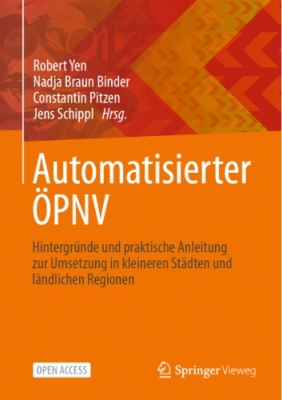What use cases could make the deployment of automated vehicles a change maker towards sustainable mobility in the near future? The story highlights and describes some examples.
I recently spoke with a city office manager who has construction and mobility in his area of responsibility. We were talking about new concepts in the field of mobility. At some point we came to the topic of automated driving and he asked me for my opinion regarding the development of automated driving and the time horizons within this would be possible. I explained that in the area of public transport, SAE Level 4 with a narrow ODD (Operational Design Domain) is already possible in a few years and that there is already a draft law from the German government for this. We further talked about what other meaningful areas of application for SAE Level 4 vehicles could be.
With the understanding that it is not the goal to bring as many vehicles and new technologies into circulation as possible, but to pursue the goal of making people's mobility climate-neutral, safer and with a better quality of life in the next ten years, the idea has emerged that a list of application areas could be helpful. Here are some initial suggestions for the use of SAE Level 4 vehicles from the political perspective and from the perspective of the administration of smaller cities and rural areas:
SAE Level 4 vehicles in smaller cities and on the outskirts of larger cities as self-driving, electric smaller buses, so-called "people movers", would open up the possibility of offering an attractive public transport service in these areas that is justifiable in terms of costs. In public transport, it is also relatively easy to create framework conditions (e.g. a dedicated lane, control centres, etc.) that make short-term use in regular operation possible. It is essential that requirements for people movers actually take the public transport use case into account. The buses could accommodate between six and nine people, with one seat reserved for a wheelchair. Each seat (seat or wheelchair space) could be separated by side partitions and could be a separate ventilation area to ensure safe public transport services even in times of pandemic. Each seat could, for example, have an induction charging field for smartphones, etc....
Another use case could be the area of ride-sharing taxis in connection with a control centre for rural areas. Hubs would have to be set up in village centres where the most important things for daily use could be bought around the clock, a parcel station would exist and perhaps a pharmacy could also be found, and which would thus have an attractive infrastructure for users. I use an app to enter where I want to go. The app tells me approximately when my ride-sharing taxi would depart from the hub and informs me if I need to leave home to get to the hub in time before departure. The algorithms dynamically calculate the routes across the different hubs that need to be served to pick up passengers based on the incoming requests for the entire call shared taxi fleet. Ride-sharing taxis would then only ever operate in a specific area. It would be conceivable that in this area there would be at least one hub from where a public transport with high service capacity would lead to the next larger cities. The planning of the nodes and the destinations that should be reached could be done using the data obtained through the app and Floating Car Data (FCD).
To reduce the traffic of distribution logistics, it is necessary to centralise the distribution of parcels and goods regionally. A region could therefore have a central logistics hub or several more peripheral hubs. For example, in the case of the central hub, a concession for distribution could be put out to tender. Automated delivery robots connected to a control centre would bring parcels in specially designed containers to the parcel stations and retail goods to the shops at night. The addressees of the parcels and goods would be notified of the arrival of their parcels at the parcel station via an app or email. This scenario is also conceivable with other business models.
Road construction in moving traffic is not only extremely dangerous for the people doing it, but can also pose a great risk to other road users. In addition, many human resources are needed to secure the places where work is being done. It is quite conceivable that a large part of this work (e.g. green cutting on the motorway, road sweeping and winter maintenance, safeguarding, road marking work, etc.) will be carried out by automated machines in the future. The manufacturers of such machines are usually not manufacturers of vehicles. The development of larger and smaller platforms that have the right technical interfaces to supply the machines with energy and, if necessary, with the required data, would significantly shorten the process towards the application of automated machines. Such vehicles could be used in just a few years with the restriction of exclusive use at night and only in conjunction with a control centre.
There are many other use cases. More exchange between the different stakeholders is needed here. The current focus in the area of automated driving on private motorised transport and Level 5 is contrary to an urgently needed holistic view.
At the end of our conversation, the head of the city office I mentioned at the beginning asked me the probably more rhetorical question: "Level 5 motorised private transport doesn't make sense at all, does it?"
PDF | SAE Level 4 Fahrzeuge – Was brauchen wir in näherer Zukunft?
PDF | SAE Level 4 vehicles - What do we need in the near future?






